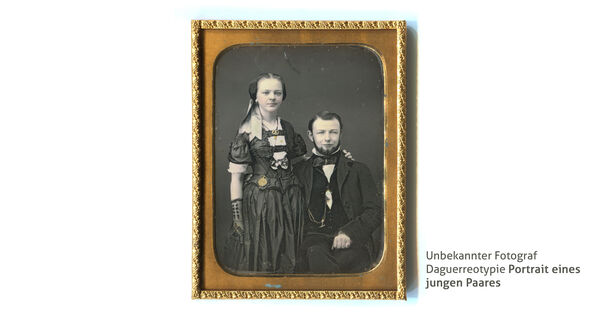The project
The Daguerreobase project is a public platform and Best Practice Network of archives, libraries, museums and private contributors from across Europe to collect and preserve information on European daguerreotypes. The Technology Collections of the City of Dresden and the Museum Ludwig, cologne, were designated as the German partners for this project.
It is the main purpose of Daguerreobase to spread best practice in the collection and dissemination of information about daguerreotypes. The Daguerreobase project brought together a consortium of 17 partners from 13 European countries; including private and public institutions,private collectors and photograph conservators. The project was partially funded under the Information and Communication Technologies Policy Support Programme (ICT PSP) as part of the Competitiveness and Innovation Framework Programme by the European Commission (http://ec.europa.eu/ict_psp), started on November 1, 2012 and was completed by October 2015. Until then, on the internet database could be documented approximately 16 000 daguerreotypes.
The daguerreotype was the first successful process in the history of photography and was named after its inventor Louis-Jacques-Mande Daguerre. After the announcement and introduction in 1839, the daguerreotype was widely used in Europe for the first photographic images of Europe and its citizens. The base of the daguerreotype is a highly polished metal plate, consisting of a thin layer of silver on a copper support. A daguerreotype is created through direct exposure in the camera and delivers a unique image from which no further photographic prints could be made.
Daguerreobase, a collective cataloguing tool for daguerreotypes
Daguerreobase is a digital, multilingual registration system specifically for daguerreotypes whereby each object’s characteristics can be accurately described. Having recorded the divergent characteristics of daguerreotypes for many years, the conservation department of the Nederlands Fotomuseum (Rotterdam) began developing the Daguerreobase in 2004. A first online application was launched in 2009. In 2012, the FotoMuseum Provincie Antwerp (FoMu) and the Nederlands Fotomuseum (NFM) led a Europe wide consortium which was successful in applying for European funding to renew and to extend the existing Daguerreobase.
The existing website www.daguerreobase.org functions as a metadata aggregator and multilingual platform interacting with the Europeana portal. Daguerreobase.org makes available daguerreotype images and descriptions, historical literature and ephemera, as well as information of activities and events in relation to the daguerreotype medium.
Daguerreobase Booklet
Here you can download the complete Booklet (German):
Daguerreobase Booklet




